Krameria bicolor S.Watson
White Rhatany
Krameriaceae - Zygophyllales
[Plants of San Diego County HOME]
Protologue: Proc. Amer. Acad. Arts 21: 417 (1886)
Pronunciation: Kra-mé-ri-a bì-co-lor
Etymology: after Johann Georg Heinrich Kramer (1684-1744), Austrian Army physician and botanist,
and/or
for his son William Heinrich Kramer (?-1765), physician, naturalist, entomologist and author
+ two-colored
Jepson eFlora Treatment
Jepson eFlora Key to Krameria taxa
SD County Synoptic Voucher
Distribution:
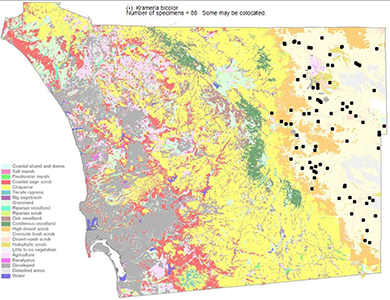
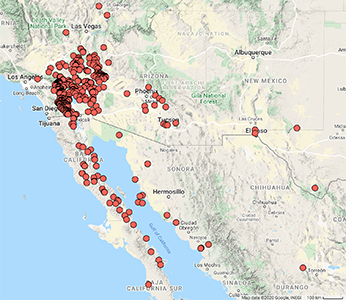
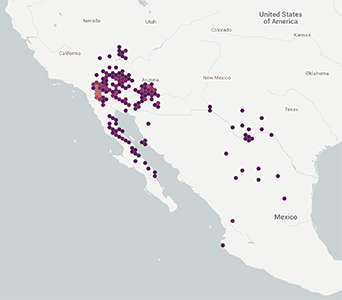
LEFT: S.D. County Plant Atlas (http://sdplantatlas.org). MIDDLE: CCH2 (http://cch2.org). RIGHT: GBIF (https://www.gbif.org). Accessed 19 Mar 2020.
Images:

Krameria bicolor
A desert shrub.
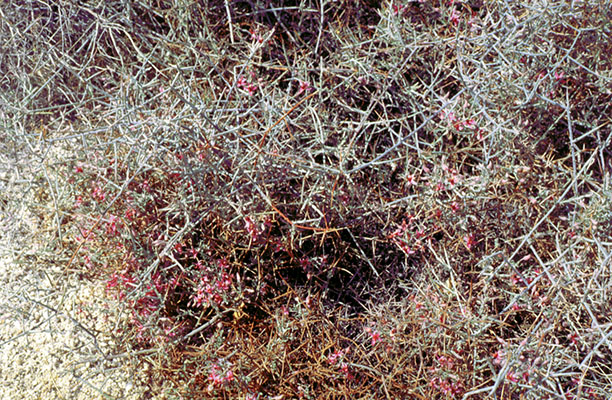
Krameria bicolor
Stems are densely branched, thorny.
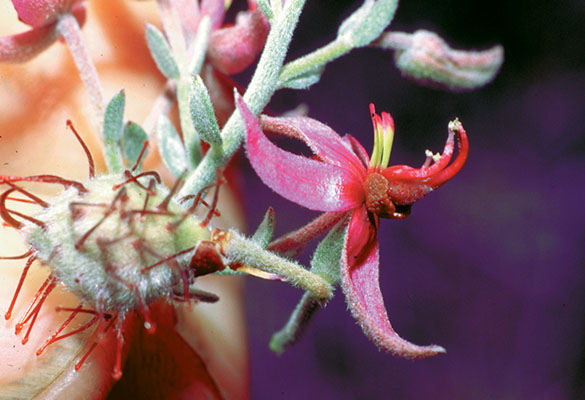
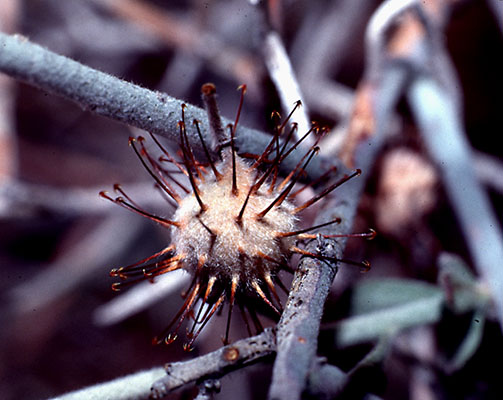
Krameria bicolor
Left: Fruit and flower. Note cancescent stems and leaves, the latter simple, narrowly elliptic.
Right: Fruit close-up. Prickles are glochidiate, with tiny retrorse barbs at apex.
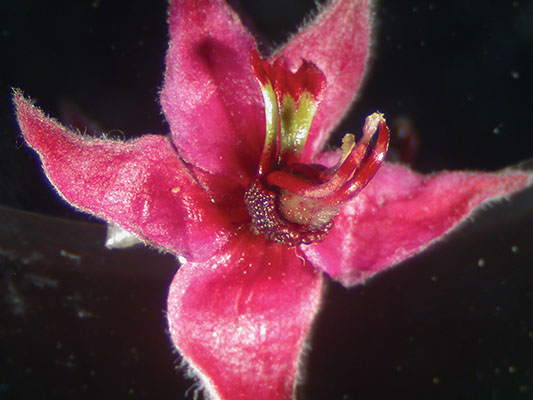
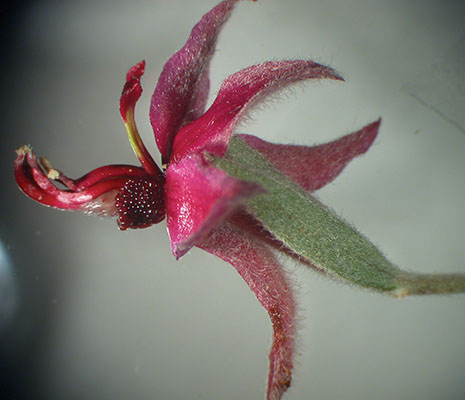
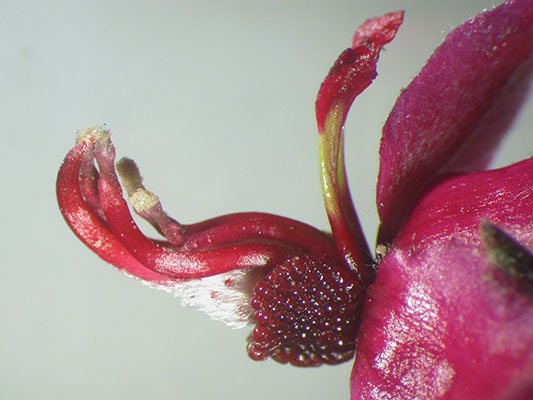
Krameria bicolor
Flower close-up. Note 3 red-tipped posterior petals. The dark red verrucose (bumpy) structures are anterior petals,
modified as glands, a reward for pollinating Centris bees, which collect oils from these lipid-secreting glands for their developing larvae.
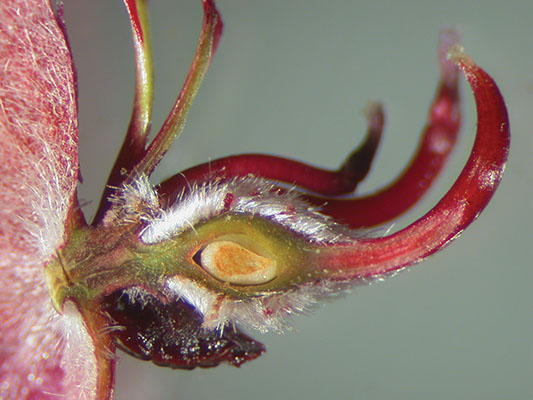
Krameria bicolor
Flower longitudinal-section, showing single ovule. Note trichomes and immature prickles from pericarp wall.
| Cal Photos images | Google images |